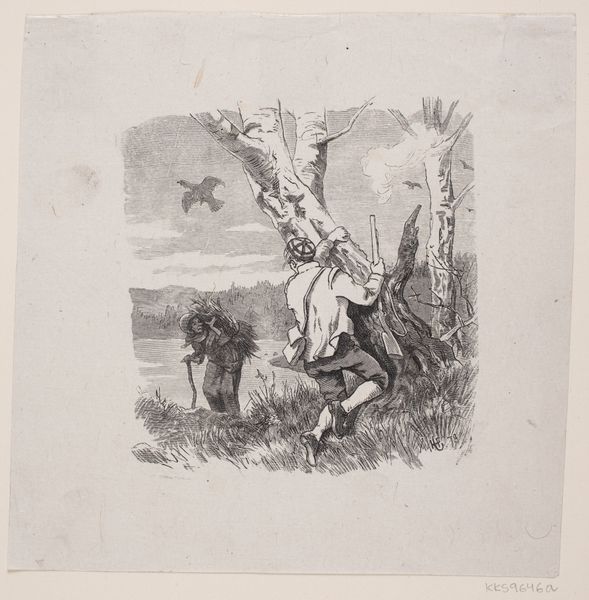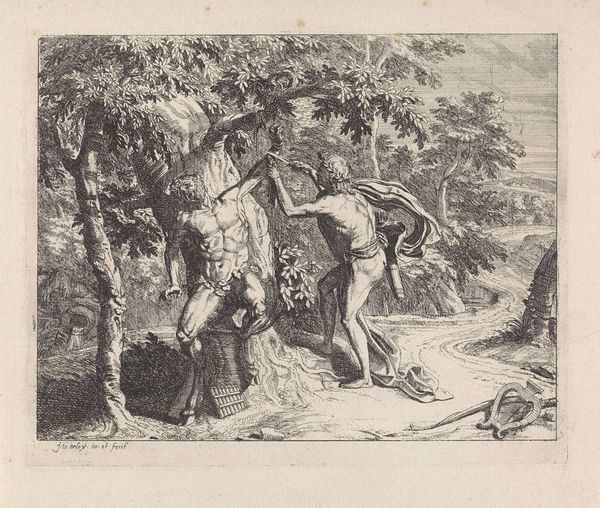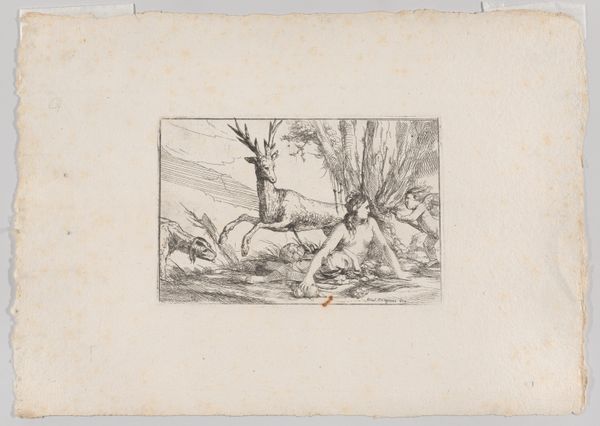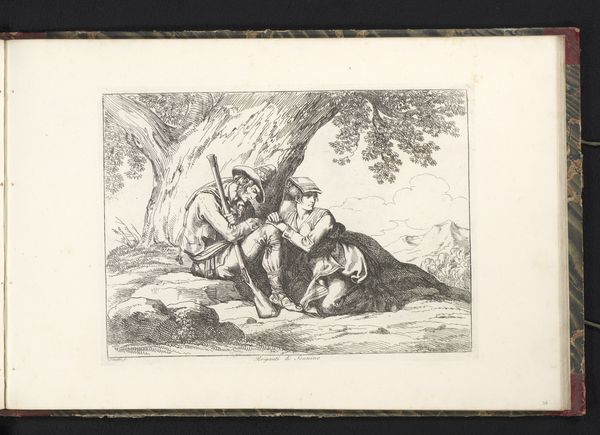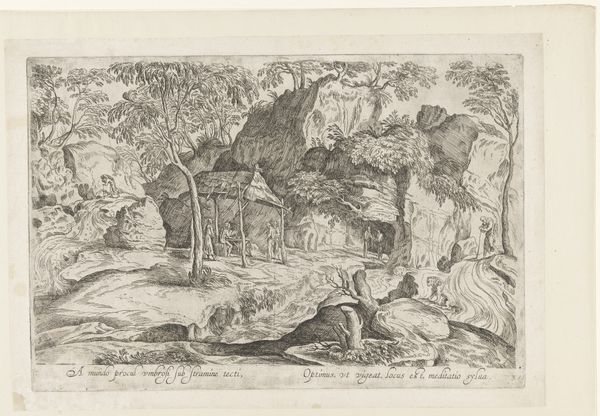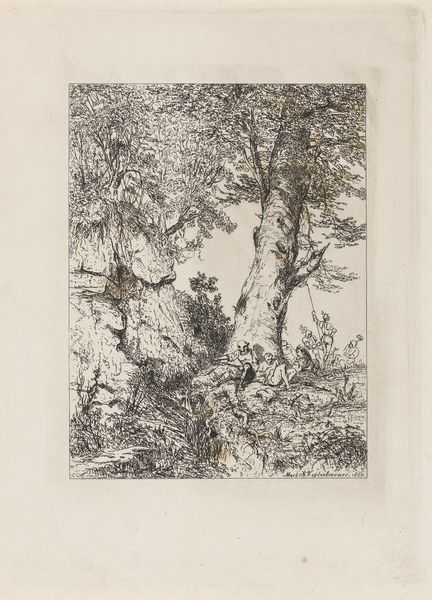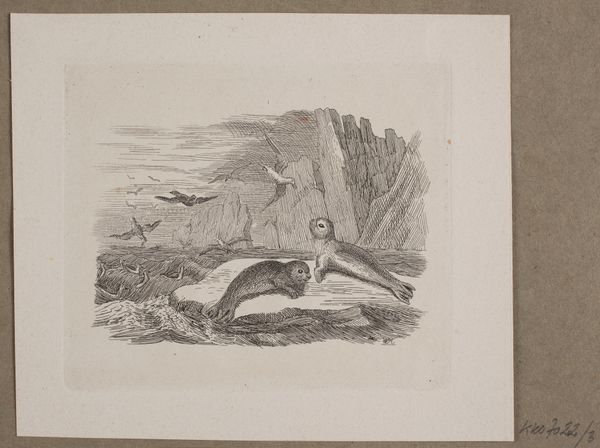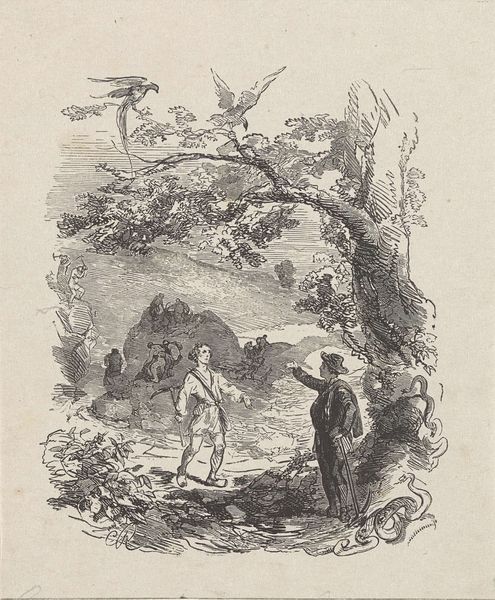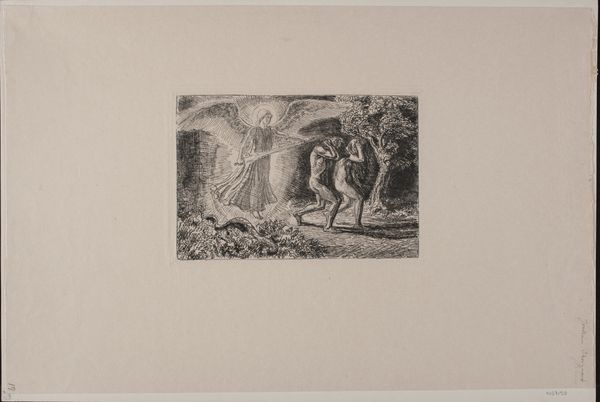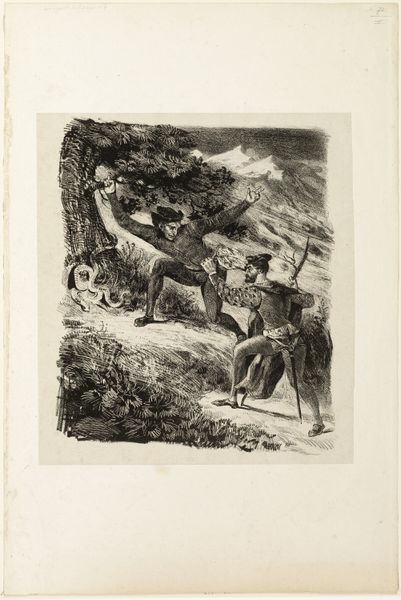
Illustration til "De Vises Steen" i H.C. Andersen, "Eventyr og Historier", Bind 2 1858 - 1865
0:00
0:00
drawing, print, ink
#
drawing
#
narrative-art
# print
#
landscape
#
ink
#
line
Dimensions: 80 mm (height) x 108 mm (width) (bladmaal)
Curator: I'm immediately struck by the frenetic energy of this image – the dense thicket of ink, the frantic animals... it feels almost panicked. Editor: Let’s contextualize this for our audience. We’re looking at an ink drawing, a print, titled "Illustration til \"De Vises Steen\" i H.C. Andersen, \"Eventyr og Historier\", Bind 2." Created between 1858 and 1865, it resides here at the SMK, Statens Museum for Kunst. It seems to depict a scene illustrating "The Wise Man’s Stone," one of Hans Christian Andersen’s “Fairy Tales and Stories”. Curator: It's interesting to see how such a seemingly simple fairy tale illustration can hold so much complexity. The figure on horseback seems to be chasing, or perhaps fleeing, a whole menagerie of creatures – deer, some kind of ape. I am wondering about that, and what is represented? Editor: That's where Andersen's narrative becomes key. This isn't just a random chase. Andersen's stories often served as a mirror to societal norms and expectations. He wasn’t merely writing for children. This piece hints at the broader societal narratives around class, desire, and unattainable dreams; the Stone itself representing perfection in this specific illustration in the fairy tales series. The protagonist seeks power, symbolized through this pursuit. The environment almost feels oppressive. Curator: It does; it's definitely not a harmonious vision of nature. All these fine lines create such a textured surface, almost claustrophobic. Is this representative of the time, do you think? Editor: Absolutely. Think about the shifts happening during the mid-19th century – rapid industrialization, growing social unrest. This image reflects that sense of upheaval, of traditional structures being challenged, through an artistic, narrative lens. Consider, for instance, how fairy tales, viewed by some as politically unserious, actually were subtly contesting the status quo, speaking truth to power and reflecting changes from generation to generation. The story offers a vehicle to look back at Andersen’s time period. Curator: Thank you for illuminating its broader cultural significance. Now I see past what seemed, at first, only agitation. Editor: Understanding its social context enriches the artwork viewing so much. Curator: I concur; looking at art using both methods unlocks something richer than approaching only one side, like focusing just on aesthetics, or just on the historical aspects.
Comments
No comments
Be the first to comment and join the conversation on the ultimate creative platform.
